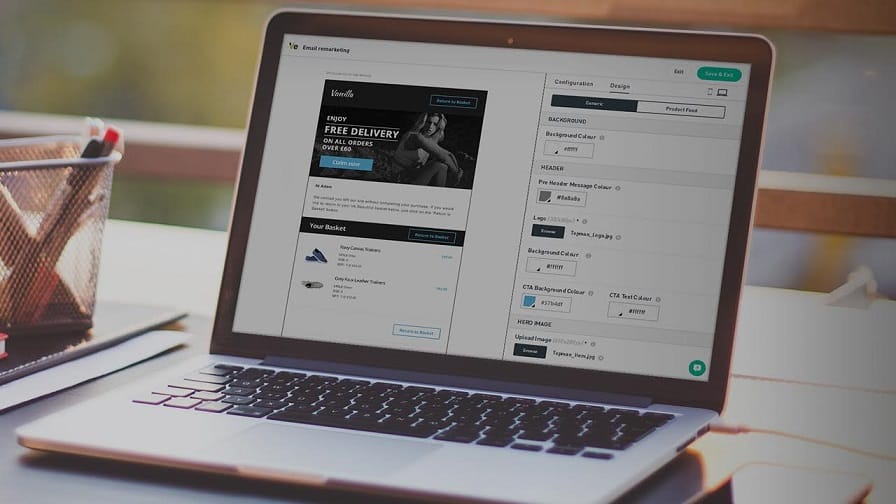SME [small and medium-sized enterprises] retailers. We need to have a frank conversation about website and cart abandonment. If you run a transactional website, then you know that abandonment is the single most frustrating thing that your customers can do while visiting your site.
Visitors land on the site, they browse, they add items to their basket and… they leave. Seems odd, and if this occurred in a bricks-and-mortar store, you would be tempted to call security. But this is something that happens all the time online, in fact, as often as 76% of the time, according to data from Ve Interactive.
As it’s likely that 90% of your advertising budget goes on attracting these very people, making such a high rate of basket abandonment all the more difficult to stomach. However, while a huge frustration, website abandonment is also a huge opportunity for SMEs to move the needle.
The best way to counter abandonment is to stop it happening in the first place. Many small and medium-sized enterprises have used an onsite overlay to help with this – and with some success, it must be said. This is where website visitors are shown a pop-up style overlay upon showing signs of exit intent to keep them onsite for longer – thus increasing their chances of completing a purchase.
Fed up with overlays
This was a useful, albeit blunt, tool for quite a while, but as the market has become saturated, customers have grown tired of the tech – prompting the same banner blindness associated with display ads to affect the onsite overlay. Through our extensive research and user testing, we discovered the majority of consumers found the appearance of an overlay to be intrusive to the user experience, off-putting and often irrelevant.
Google have picked up on this too and as of January this year are punishing sites using overlays in their search rankings, citing a lack of mobile functionality as the main reason.
What’s next?
Despite the bad press, many companies still rely on this tech to convert more of their hard-earned traffic into conversions, largely due to the lack of an alternative. However, there is an increasing number of platforms becoming available that provide brand-native experiences for consumers, marking the retirement of intrusive overlays.
To improve the UX delivered by overlays, these platforms are usually fully integrated into a client’s website and seamlessly emerge, either by a user selecting on them or if someone sits idle on a site. The experience is specifically designed to engage rather than intrude upon a user’s browsing session.
Many of the top solutions are also mobile-friendly, user-centric onsite solutions that reduce bounce rate, browsing exit and basket abandonment, with designs inheriting the host’s brand style and aesthetic to provide a truly native user experience.
Show rather than tell: Claire’s Accessories
One of the many retailers who made the upgrade from the traditional overlay to a more sophisticated solution was Claire’s Accessories, one of the world’s leading speciality retailers of fashionable jewellery and accessories for young women.
Claire’s had a traditional pop-up overlay tool live on its site before the move to an onsite engagement platform, achieving a total of 4,909 clicks and 1409 sales. However, when they moved over to a more integrated solution, fully branded and mobile-friendly, the first three months saw a staggering 30,246 clicks; showing that customers were more willing to interact with an unobtrusive panel that encourages interaction, rather than a pop-up overlay.
Overall, this approach, delivered via the VePanel solution, has generated the following results for Claire’s to date:
- 2.5% increase in AOV [average order value]
- 83% uplift in clicks
- 3.3 times uplift in sales
- 3.5 times uplift in revenue
Claire’s is continuously seeing fantastic results while bringing in £120K in revenue and 4,700 sales since going live with its onsite engagement solution. However, with consumer behaviour in constant flux, the company appreciates that continuous optimisation is needed to target the right audiences, with the right messages, using the right prompts.
This means, among other things, testing new features and adapting messaging to suit its marketing calendar to further increase engagement and conversions on its site.
Making it work
Small business owners are passionate people who hire passionate people, usually because there is more on the line if they fail. So, when tackling a problem as important as website abandonment it can be a risk to place trust in a third-party tech provider.
This is why it’s time for retailers to take control of their abandonment campaigns. Aspirational brands should have autonomy in making both minor tweaks or major overhauls to their onsite as well as email customer engagement efforts. The great news is that this enterprise-grade tech is becoming more readily available for start-ups and growing brands.

